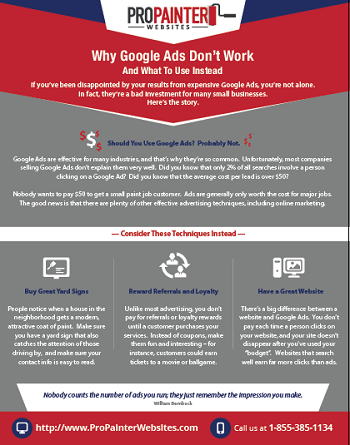Vital Seasonal Aspects Of Commercial Exterior Painting: What You Must Comprehend
Vital Seasonal Aspects Of Commercial Exterior Painting: What You Must Comprehend
Blog Article
Authored By-McLamb Skafte
When you're intending a business external painting job, seasonal factors can make or break your results. You'll want to take into consideration how temperature and moisture effect paint application and drying out times. Selecting the right period can ensure your paint sticks effectively and lasts longer. But which periods are absolutely the best for this type of work? Allow's discover the key elements that can influence your task's success.
The Effect of Temperature Level on Paint Application
When you're preparing an industrial external paint project, the temperature level can substantially impact just how well the paint sticks and dries.
Ideally, you wish to repaint when temperatures range in between 50 ° F and 85 ° F. If it's also chilly, the paint may not cure effectively, resulting in issues like peeling off or splitting.
On the flip side, if it's as well hot, the paint can dry too promptly, preventing appropriate attachment and resulting in an irregular surface.
You need to additionally consider the time of day; early morning or late afternoon provides cooler temperature levels, which can be much more beneficial.
Constantly check the producer's suggestions for the certain paint you're making use of, as they frequently offer assistance on the suitable temperature level array for optimum results.
Humidity and Its Result on Drying Times
Temperature level isn't the only ecological variable that affects your commercial outside painting project; moisture plays a considerable function as well. High moisture levels can reduce drying out times considerably, influencing the general quality of your paint work.
When the air is saturated with wetness, the paint takes longer to cure, which can cause concerns like inadequate adhesion and a greater threat of mold growth. If you're painting on a particularly damp day, be prepared for extensive delay times between layers.
It's important to keep an eye on regional weather conditions and plan appropriately. Preferably, aim for humidity degrees between 40% and 70% for ideal drying.
Keeping these factors in mind ensures your job remains on track and delivers a long-term surface.
Best Seasons for Commercial Exterior Painting Projects
What's the best time of year for your business exterior painting tasks?
house painter plymouth and very early fall are generally your best choices. During these periods, temperature levels are mild, and humidity levels are frequently lower, producing optimal conditions for paint application and drying out.
Stay painting house of summertime's intense heat, which can trigger paint to completely dry as well rapidly, bring about poor bond and coating. Likewise, winter season's cool temperature levels can impede correct drying and curing, running the risk of the durability of your paint task.
Go for days with temperatures between 50 ° F and 85 ° F for ideal results. Remember to examine the regional weather forecast for rainfall, as wet problems can wreck your job.
Preparation around these aspects ensures your painting task runs efficiently and lasts much longer.
Verdict
To conclude, preparing your business external painting tasks around seasonal considerations can make a significant difference in the result. By scheduling job throughout the optimal temperatures and moisture levels, you'll make certain much better adhesion and drying out times. Keep in mind to watch on neighborhood weather prediction and select the right time of year-- spring and early autumn are your best bets. Taking these steps will help you accomplish a durable and expert coating that lasts.
